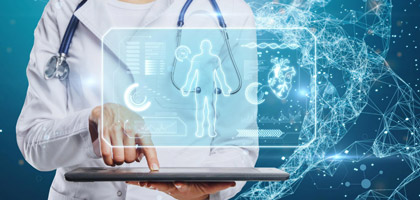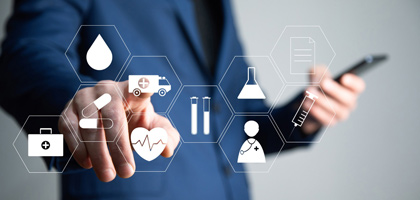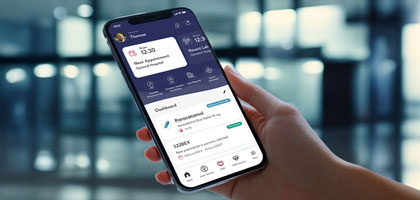
Blog
The Importance and Necessity of Interoperability in Healthcare IT Systems
In a global healthcare scenario, attaining true interoperability may be one of the greatest challenges. Inadequate communication among healthcare systems disrupts the quality of care, delays patient treatments and produces inefficiencies for physicians. The result: all patient data cannot be accessed, testing is duplicated, instances of illness are overlooked and costs rise. All of these result in healthcare systems not working efficiently and patients not receiving the quality of care they should receive.
We know this to be true, that is why we are determined in providing a range of products and solutions tailored specifically address these problems. We are doing this by rethinking how healthcare information is exchanged and improving how data moves between dissimilar systems through our solutions.

The Importance of Interoperability in Healthcare
Interoperability in healthcare significantly influences how modern healthcare information systems work efficiently. It allows different IT systems to share information without problems, which helps healthcare authorities and professionals provide better, more organized and patient-focused care. You might wonder in which areas this occurs. We'll explain it now.
Improving Patient Care
Interoperability helps to enhance patient care quality by giving healthcare authorities and professionals access to full current patient information, no matter where they're treating the patient.
Complete Picture of Patient History
When healthcare systems can talk to each other, healthcare professionals can see a patient's whole medical history, including past diagnoses, treatments, medicines, allergies and test results. This full picture lets healthcare professionals make better choices, cut down on mistakes and tailor treatments to each patient's needs.
Ongoing Care
Interoperability makes it easier to keep care going for patients who move between different healthcare places. For example, when a family physician sends a patient to see a specialist, the specialist can look at the patient's records, making sure no important information gets lost in the process.
Cutting Costs
Interoperability helps lower healthcare expenses by making processes smoother, getting rid of duplicate work and using resources better. Here's how it does this.
No More Repeat Tests
One of the clearest ways interoperability saves money is by stopping unnecessary repeat tests and procedures. When physicians and healthcare authorities can see past test results, they don't need to order the same tests again, which saves time and money.
Smoother Office Work
Interoperability also cuts down on office tasks by letting different systems share information. It means things like billing, insurance claims and checking patients in can happen faster when systems work together. It cuts down on manual data entry and the costs that come with it.
Better Use of Resources
When systems can talk to each other, hospitals and clinics can use what they have more. They get a clear picture of what patients need and what's available. It leads to better management of hospital beds, medical gear and staff, which further brings down running costs.
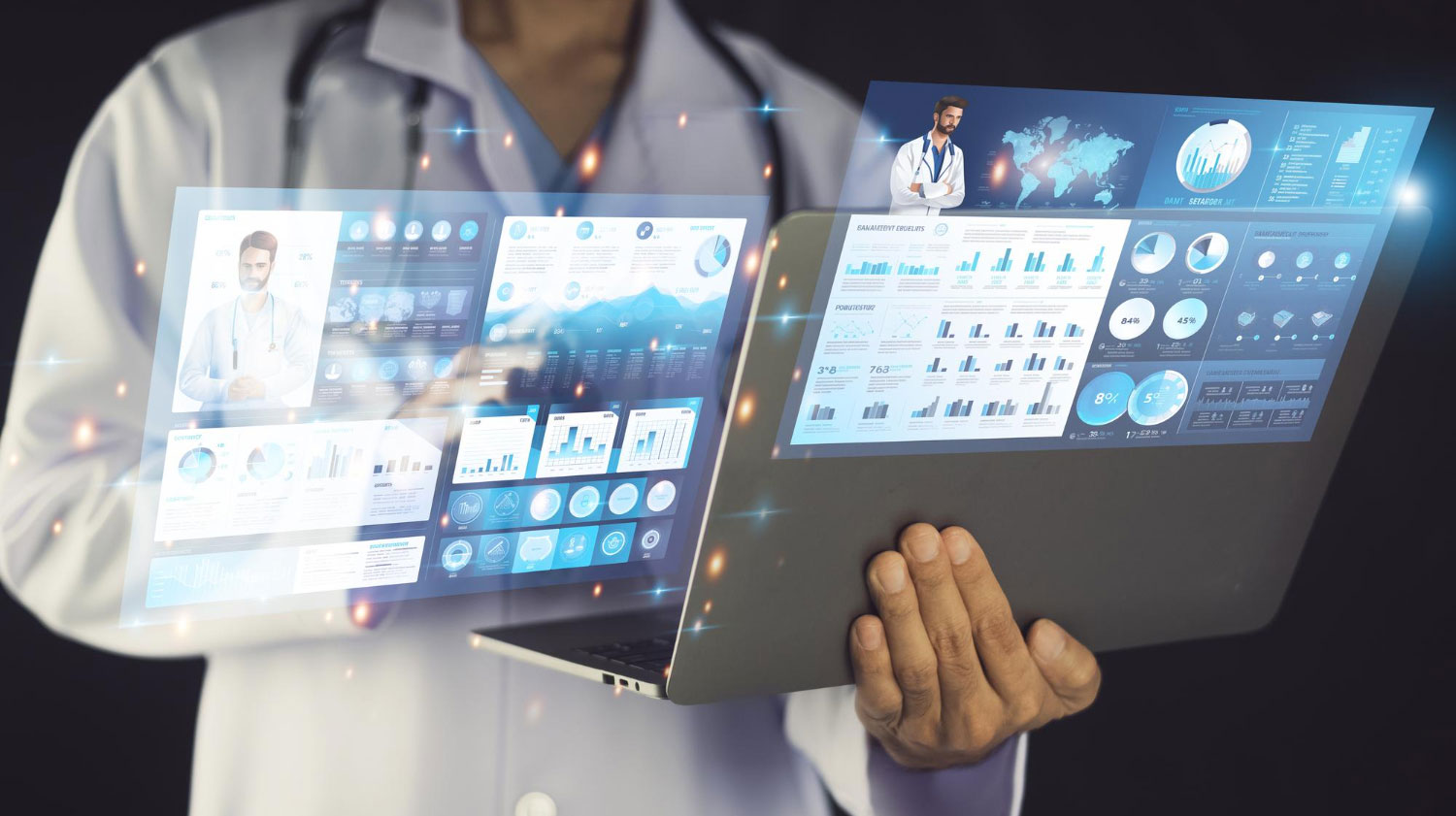
Improving Data Accuracy
Data accuracy plays a key role in healthcare, as wrong or incomplete info can cause serious problems. Interoperability makes sure data stays accurate, current and easy to access.
Standardization of Data
Systems that work together need standard data formats and rules. It cuts down on mistakes that can happen when data moves around. Standardization helps all systems understand the information.
Real-Time Data Updates
When systems can talk to each other patient records get updated right away. It means physicians always have the latest info. It's important in emergencies when quick choices depend on having the newest data.
Reduction of Manual Data Entry
When systems connect, people don't have to type in data as much. It helps because typing things in by hand often leads to mistakes. When data moves on its own between systems, it stays accurate without human error getting in the way.
Supporting Public Health Initiatives
Interoperability is one vital ingredient of efficient public health initiatives. It allows for the monitoring of diseases, better prevention and faster reaction.
Surveillance and Reporting
Interoperable systems make it possible for real-time surveillance and reporting of outbreaks and other public health hazards. It enables the authorities in charge of public health to watch out for patterns, identify new issues and respond quicker as well as more effectively.
Population Health Management
By collecting data from diverse sources, interoperable systems help in population health management. It comprises monitoring population-specific health indicators, such as tracking their outcomes, spotting risks or even using targeted measures to promote a general wellbeing.
Support for National Health Programs
Many national health programs depend on the capacity to exchange information among various healthcare systems. For example, immunization schemes, dealing with long term illnesses and screening of illnesses are all facilitated by an uninterrupted flow of information between providers, public health agencies and other stakeholders.
By addressing these essential aspects, interoperability in healthcare IT systems improves the efficiency and effectiveness of healthcare delivery and lays the foundation for future advancements in the field. As healthcare continues to evolve, the importance of interoperability will only grow, making it an essential focus for healthcare organizations worldwide.

Essential Components of Interoperability in Healthcare IT Systems
Achieving true interoperability in healthcare IT systems requires a multifaceted approach. Various technical and operational components must work harmoniously to enable seamless data exchange across different platforms and organizations.
Standards and Protocols
Standards and protocols are the foundation of interoperability in healthcare IT systems. They define the rules and formats for how data should be structured, transmitted and interpreted across different systems.
HL7 (Health Level Seven International)
HL7 is one of the most widely used standards in healthcare. It provides guidelines for the exchange, integration, sharing and retrieval of electronic health information. It ensures that different healthcare systems can communicate in a common language, facilitating the exchange of clinical data such as patient records, lab results and billing information.
FHIR (Fast Healthcare Interoperability Resources)
FHIR is an advanced standard developed by HL7 that supports modern web-based data exchange. FHIR is designed to enable the easy and secure exchange of healthcare information through APIs (Application Programming Interfaces). It allows for rapidly developing healthcare applications integrated with existing systems, promoting flexibility and innovation.
ICD (International Classification of Diseases)
The ICD is a globally recognized standard for diagnosing and classifying diseases and health conditions. By providing a common language for reporting and monitoring diseases, the ICD enables consistent and comparable data collection, crucial for global health monitoring, research and interoperability.
SNOMED CT (Systematized Nomenclature of Medicine Clinical Terms)
SNOMED CT is a comprehensive, multilingual clinical healthcare terminology that provides a standardized way to represent clinical information. It enables consistent, accurate and reliable clinical content capture and exchange across different systems, enhancing interoperability.
LOINC (Logical Observation Identifiers Names and Codes)
A system that provides standard codes for laboratory and clinical observations. It enhances data sharing and interoperability in healthcare by making data more understandable across different systems. LOINC is widely used in electronic health records to ensure accurate data representation.
RxNorm
A terminology system that standardizes drug names and their relationships. Developed by the U.S. National Library of Medicine (NLM), it ensures the equivalence of different drug names. RxNorm plays a crucial role in e-prescribing and drug information systems, facilitating seamless communication between healthcare authorties / professionals.
DICOM (Digital Imaging and Communications in Medicine)
An international standard used for storing and transmitting medical imaging information. It ensures compatibility between different medical imaging devices and systems. DICOM is essential for the integration of imaging data across various healthcare platforms, enabling efficient diagnosis and treatment.

Data Exchange Platforms
Data exchange platforms play a critical role in enabling interoperability by providing the infrastructure needed to secure and efficiently share health information across different systems and organizations.
Health Information Exchange (HIE)
HIE platforms facilitate the electronic movement of health-related data between organizations, including hospitals, clinics, laboratories and public health agencies. These platforms ensure that patient information is available where and when it is needed, supporting continuity of care and improving patient outcomes. Depending on the scope of data exchange, HIE can operate on a regional, state or national level.
Electronic Health Records (EHR) Integration
EHR systems are central to interoperability efforts, as they store and manage patient health information in a digital format. Integrating EHR with other healthcare systems, such as HIE, laboratory information systems (LIS) and radiology information systems (RIS), allows for the seamless exchange of patient data across different points of care.
Personal Health Records (PHR)
PHR is a digital record maintained by patients that contains their health information, such as medical history, medications and lab results. When PHR is interoperable with EHR and other healthcare systems, patients can easily share their information with healthcare providers, enhancing patient engagement and care coordination.
Security and Privacy
Security and privacy are essential in healthcare interoperability, as they ensure that sensitive health information is protected from unauthorized access, breaches and misuse.
GDPR and HIPAA Compliance
To give an example, in the United States, healthcare organizations must comply with HIPAA regulations, which set national standards for the protection of health information. HIPAA compliance involves implementing administrative, physical and technical safeguards to ensure health data's confidentiality, integrity and availability during exchange. Also, there is another law called General Data Protection Regulation (GDPR), which is a legal framework established by the European Union that sets guidelines for the collection and processing of personal data. It aims to protect the privacy and data rights of individuals within the EU, imposing strict requirements on organizations that handle such data. GDPR’s relevance to healthcare data is particularly significant, as it classifies health information as a special category of personal data, requiring enhanced protection. Healthcare organizations handling EU residents' data must ensure compliance with GDPR’s stringent regulations, which include obtaining explicit consent from individuals, ensuring data minimization, implementing strong encryption methods and enabling data subjects to exercise their rights, such as access, rectification and erasure of their health data. As a result, these measures are crucial to maintain the privacy and security of sensitive health information within the EU.
Data Encryption
Encryption is a critical security measure that protects health information by converting it into a coded format that can only be accessed by authorized users. Encryption ensures that even if data is intercepted during transmission, it remains secure and unreadable to unauthorized parties.
Access Control
Access control mechanisms are used to restrict access to health data based on the roles and responsibilities of users. These mechanisms ensure that sensitive health data and information are only accessible to authorized personnel, protecting patient privacy and maintaining data security.
Audit Trails
Audit trails track and record all access to and use of health data, providing a log of who accessed what information and when. These logs are essential for monitoring compliance with security policies, detecting unauthorized access and investigating potential security incidents.
Consent Management
Interoperable systems must include mechanisms for managing patient consent, ensuring that patients have control over who can access their health information. This is particularly important in cases where data is shared across different organizations or jurisdictions, where varying consent regulations may apply.
Governance and Policy Frameworks
Interoperability is not just a technical challenge; it also requires strong governance and policy frameworks to ensure that data exchange occurs securely, ethically and legally compliant.
National and International Interoperability Initiatives
Many countries have established national interoperability frameworks and initiatives to promote the seamless exchange of health information across healthcare systems.
Data Sharing Agreements
Healthcare organizations must establish data-sharing agreements that outline the terms and conditions for exchanging health information. These agreements define each party's roles and responsibilities, the types of data to be shared and the security measures that must be in place to protect the data.
Ethical Considerations
Interoperability initiatives must consider the moral implications of data exchange, particularly regarding patient privacy, consent and the use of data for secondary purposes such as research and public health surveillance. Governance frameworks should include ethical guidelines to ensure data exchange is conducted in a way that respects patient rights and promotes trust in the healthcare system.
By understanding and implementing these key components, healthcare organizations can achieve interoperability, provide better, more coordinated care, improve operational efficiencies and support public health initiatives. As healthcare IT evolves, these components will remain essential in building a connected, patient-centered healthcare ecosystem.
So how did we, as Tiga, achieve this?

Achieving Interoperability with Tiga Healthcare Technologies' Solutions
We recognize that true interoperability is one of the most significant components of efficient, patient-centered healthcare. We have developed advanced products that address the complex challenges of integrating disparate healthcare systems, ensuring that data flows seamlessly across platforms and providers. Here's how our essential products contribute to achieving interoperability in healthcare.
FHIR Stack: Standardizing Data Exchange with FHIR Protocol
FHIR Stack is our centralized solution that leverages the FHIR (Fast Health Interoperability Resources) protocol, an HL7 standard, to ensure seamless data exchange and integration across healthcare systems.
Centralized Data Sharing
FHIR Stack provides a robust framework for sharing electronic health records across different healthcare applications and devices. By adhering to FHIR standards, it ensures that data is formatted and communicated in a consistent manner, facilitating real-time interoperability.
Integration of Health Information Systems
FHIR Stack allows for the integration of various health information systems, streamlining the management of health data. It supports the development of highly available and comprehensive data repositories by collecting, exchanging and managing information shared among healthcare providers.
Improving Clinical and Administrative Workflows
By enabling real-time communication across clinical and administrative workflows, FHIR Stack enhances the efficiency and security of healthcare operations. It leads to more effective patient care and streamlined administrative processes.
Support for Development
FHIR Stack defines standards for developing integrated health information systems, ensuring that all applications and systems involved in patient care can work together effectively. It includes setting standards for data formats, resource definitions and communication methods.
Enterprise Master Patient Index (EMPI): Ensuring Accurate Patient Identification
The Enterprise Master Patient Index (EMPI) is a critical tool for managing patient identities across multiple health information systems, ensuring that each patient's data is accurately linked and easily accessible.
Single Point of Identity
EMPI provides a consistent reference point for patient identity and reference data, ensuring that each patient's information is accurately linked across different systems. This is essential for maintaining data accuracy and preventing errors in patient care.
Errorless Data Management
By linking identity and reference data across multiple systems, EMPI reduces the risk of duplicate records and mismatched data, which are common interoperability barriers. It ensures that healthcare providers have access to accurate, up-to-date patient information.
Seamless Interoperability
EMPI enables seamless interoperability by providing a unified view of patient data across various platforms. This helps healthcare providers make informed decisions based on a complete and accurate understanding of the patient's medical history.
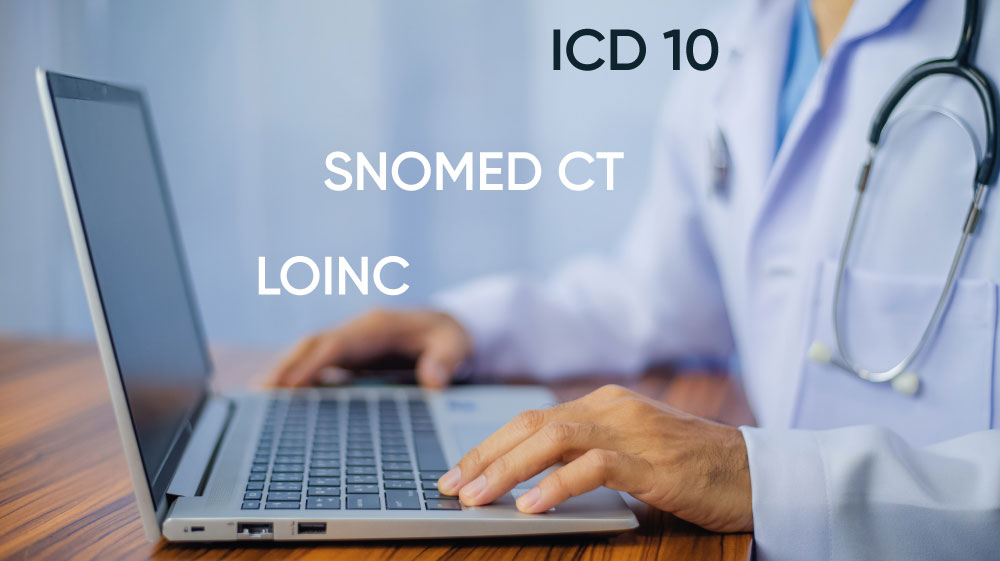
Terminology Server: Standardizing Clinical Terminology for Better Data Understanding
The Terminology Server is a powerful tool that standardizes the clinical terminology used across healthcare systems, ensuring that health data is encoded consistently and understood universally. It supports a wide range of standards, including SNOMED CT, ICD 10-11, LOINC and RxNorm and DICOM, enabling seamless integration and interoperability across diverse healthcare platforms.
Building and Managing Terminology Content
The Terminology Server enables the creation and management of clinical terminology content in accordance with national and international standards. It ensures that all health records are encoded correctly, facilitating accurate data exchange and interpretation.
Overcoming Terminology Variations
In healthcare, different systems often use varying terminologies, making it difficult to achieve true interoperability. The Terminology Server addresses this challenge by providing a standardized structure for terminology, enabling consistent data management across systems.
Facilitating Data Sharing
The Terminology Server simplifies the sharing and understanding of health data by standardizing the terminology used across healthcare systems. It ensures that all stakeholders, from clinicians to researchers, can interpret the data accurately, leading to better patient outcomes and more effective health initiatives.
Health Information Exchange (HIE) Viewer: Providing a Holistic View of Patient Data
The Health Information Exchange (HIE) Viewer is designed to improve patient care's speed, quality and safety by providing healthcare professionals with secure access to comprehensive patient data.
Secure Access to Patient Records
HIE Viewer allows healthcare facilities and professionals to access and view patients' electronic health records, including their current health status, medications, treatments, diseases, allergies and laboratory results. It is essential for providing timely and accurate care.
Holistic View of Patient History
During clinical treatment, the HIE Viewer lets healthcare professionals view electronic health records from all connected healthcare systems. It provides a holistic view of the patient's medical history, crucial for making more informed treatment decisions and managing ongoing care needs.
Enhancing Healthcare Delivery
By integrating data from multiple sources, the HIE Viewer enhances healthcare delivery by ensuring that providers have access to all relevant information when treating a patient. It improves the quality of care and helps reduce errors and avoid redundant tests or treatments.
Besides, the World Health Organization's updated 'Support tool for strengthening health information systems' offers a strategic plan for nations to enhance their health information systems through self-assessment, planning and progress tracking. At Tiga, we align with this vision by providing healthcare IT solutions that empower equitable and accessible care. Our systems, including the Health Information Exchange (HIE) Viewer and Personal Health Record System, ensure seamless access to patient data and support evidence-based health policy, creating a more informed and collaborative healthcare experience for the future.
We also align with the vision of the ‘Model Law on Health Data Governance’ by Transform Health, enhancing patient outcomes through secure and integrated data sharing. Our FHIR Stack, EMPI, Terminology Server and HIE Viewer solutions ensure seamless information flow and data management in healthcare, driving improved care quality and efficiency.
Last but not least, we support the WHO's strategic plan for advancing RHIS by offering secure, real-time data management and patient engagement solutions that align with WHO's digital health transformation goals.

The Future of Interoperability and Our Vision
As we continue to innovate and expand our products, we remain committed to advancing interoperability in healthcare. We understand that the future of healthcare depends on the ability to exchange and integrate data seamlessly across diverse systems and platforms. By using technologies and adhering to global standards, we are building a healthcare ecosystem where data flows effortlessly, empowering healthcare providers to deliver better, more coordinated care.
Our vision for the future includes:
- Expanding the capabilities of our existing products.
- Integrating more emerging technologies such as artificial intelligence.
- Continuing to set new standards for interoperability in the healthcare industry.
Through these efforts, we aim to meet the current demands of healthcare IT and anticipate and address the challenges of tomorrow, ensuring that healthcare systems worldwide are equipped to deliver the highest quality of care.
Let's shape the future together!
